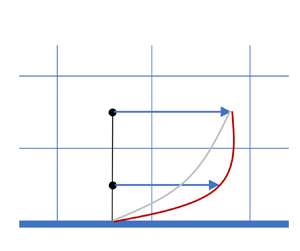Article contents
A POD-mode-augmented wall model and its applications to flows at non-equilibrium conditions
Published online by Cambridge University Press: 16 November 2023
Abstract

Insights gained from modal analysis are invoked for predictive large-eddy simulation (LES) wall modelling. Specifically, we augment the law of the wall (LoW) by an additional mode based on a one-dimensional proper orthogonal decomposition (POD) applied to a two-dimensional turbulent channel. The constructed wall model contains two modes, i.e. the LoW-based mode and the POD-based mode, and the model matches with the LES at two, instead of one, off-wall locations. To show that the proposed model captures non-equilibrium effects, we perform a priori and a posteriori tests in the context of both equilibrium and non-equilibrium flows. The a priori tests show that the proposed wall model captures extreme wall-shear stress events better than the equilibrium wall model. The model also captures non-equilibrium effects due to adverse pressure gradients. The a posteriori tests show that the wall model captures the rapid decrease and the initial decrease of the streamwise wall-shear stress in channels subjected to suddenly imposed adverse and transverse pressure gradients, respectively, both of which are missed by currently available wall models. These results show promise in applying modal analysis for turbulence wall modelling. In particular, the results show that employing multiple modes helps in the modelling of non-equilibrium flows.
JFM classification
- Type
- JFM Papers
- Information
- Copyright
- © The Author(s), 2023. Published by Cambridge University Press
References
- 3
- Cited by





